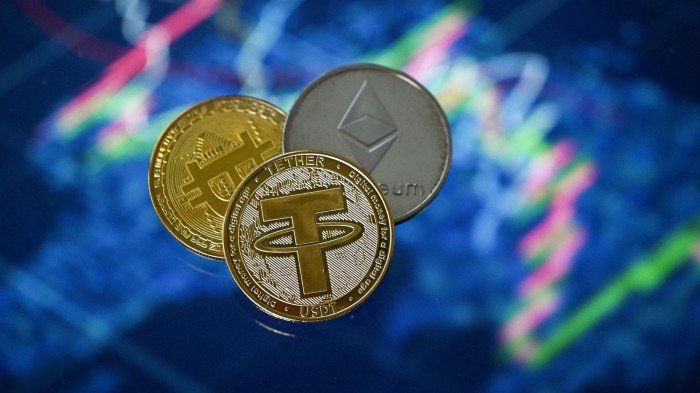Unlock the Editor’s Digest without spending a dime
Roula Khalaf, Editor of the FT, selects her favorite tales on this weekly e-newsletter.
The author is chair of Société Générale and a former member of the manager board of the European Central Financial institution
Stablecoins are quick rising as a disruptive drive in world finance — and central banks are rightly paying consideration. The Financial institution for Worldwide Settlements not too long ago warned {that a} lack of confidence in stablecoin issuers could lead on completely different cash to diverge from buying and selling at par. This may threaten financial stability, notably if the issuers’ reserves lose worth or are insufficiently liquid to satisfy redemption calls for.
Banning stablecoins would appear like the apparent answer, however would in all probability be misguided. The truth is, it’s neither possible nor fascinating.
As an alternative, stablecoins must be understood for what they’re: a technological breakthrough with profound implications for the monetary system. They permit for near-instant, low-cost, peer-to-peer transactions throughout borders, all inside a decentralised infrastructure. At scale, they will help the financing of public debt, since issuers are required to again them with authorities bonds. Extra broadly, tokenisation — the expertise that underpins stablecoins — provides the potential to modernise capital markets and improve effectivity throughout the monetary sector.
This isn’t misplaced on the US. Washington has begun to place regulatory guardrails in place — such because the Genius Act — to manipulate the issuance of stablecoins. The consequence has been a increase in private-sector innovation, drawing in main banks and monetary establishments.
Europe, to its credit score, has additionally taken steps. The EU’s Markets in Crypto-Belongings (MiCA) regulation is among the most complete crypto frameworks globally, which really addressed a few of the considerations of central banks. It requires stablecoin issuers to carry high-quality, liquid reserves — 30 per cent in money, the rest in extremely rated sovereign bonds — and builds in safeguards to handle liquidity dangers. The EU’s pilot regime for distributed ledger expertise lays the inspiration for a extra sturdy market infrastructure.
And but, Europe stays far behind. Almost 99 per cent of stablecoins are issued within the US and denominated in {dollars}. The euro barely registers on this new digital monetary ecosystem.
The explanations for this usually are not primarily regulatory however cultural. They replicate a deep-rooted threat aversion and concern of the unknown that continues to stifle innovation. Many European banks see stablecoins as a menace to their worthwhile actions, notably in funds and transactions. The investments required to adapt — each technological and human — are appreciable, and first movers concern being left to bear the danger alone.
It is a traditional case of co-ordination failure. Left unaddressed, it should delay progress and depart Europe on the sidelines. Management is required — above all from public authorities. But European financial authorities stay hesitant, usually as a result of elementary misunderstandings.
First, there’s a big underestimation of the strategic benefits that tokenisation can provide to the combination of the European capital market and the event of a euro secure asset. That is evident from the idea {that a} retail central financial institution digital foreign money, constructed on conventional infrastructure, may compete successfully with stablecoins.
Second, there seems to be a misguided perception that European entities might be insulated from world stablecoin use — a notion that doesn’t maintain in an interconnected monetary system.
Third, and most essential, authorities don’t appear to grasp that failure to be proactive in the end places European financial sovereignty in danger. Certainly, except euro stablecoins are issued and extensively utilized in Europe, euro-area deposits will migrate to international platforms, disintermediating European cost programs. Management over financial and monetary flows would erode — with long-term penalties for monetary stability and coverage effectiveness.
Satirically, Europe could also be higher positioned than the US to reply. Whereas Washington has sidelined the Federal Reserve in shaping the stablecoin regulatory framework, within the EU, the central financial institution nonetheless has the institutional capability to play a number one function. This isn’t solely in regulating stablecoin issuance — particularly by establishments comparable to banks — but additionally in mitigating systemic dangers and coordinating innovation.
Europe has lengthy struggled with a fame for over-regulation and technological inertia. This is a chance to chart a distinct course. The instruments are there. What’s wanted now’s management. Failing that, Europe is not going to simply be following the tempo set by others — it is going to be accepting its marginalisation in the way forward for world finance.
